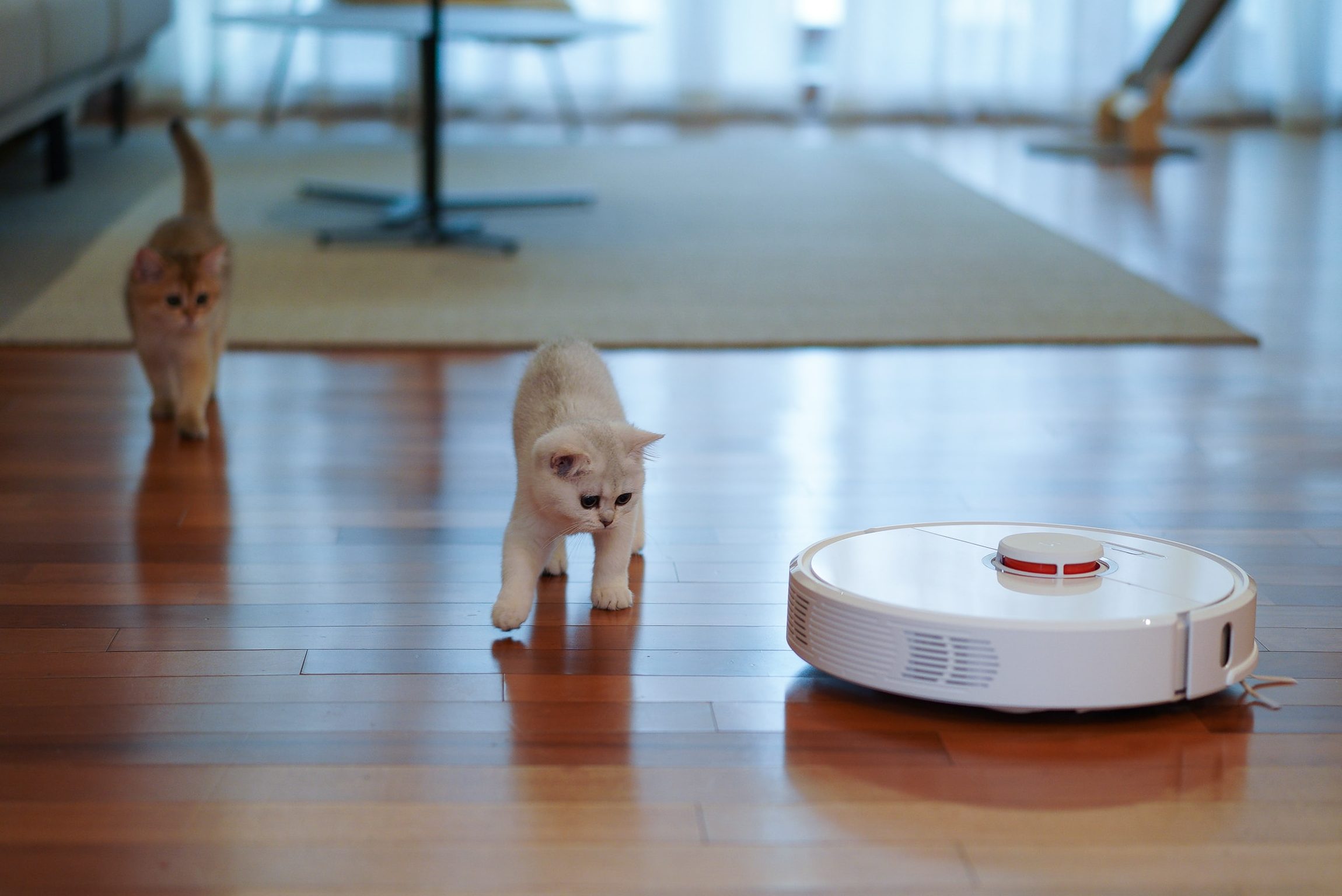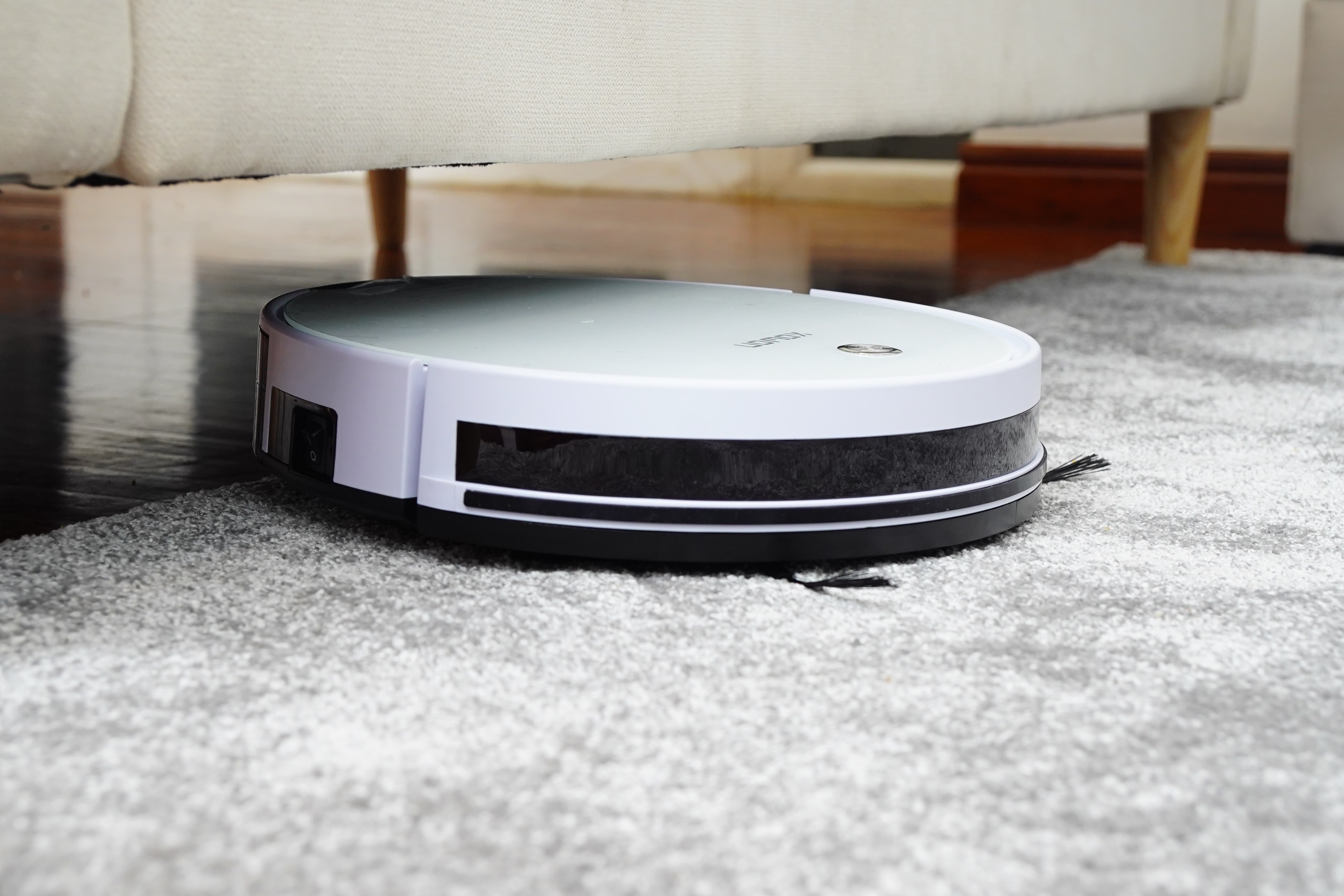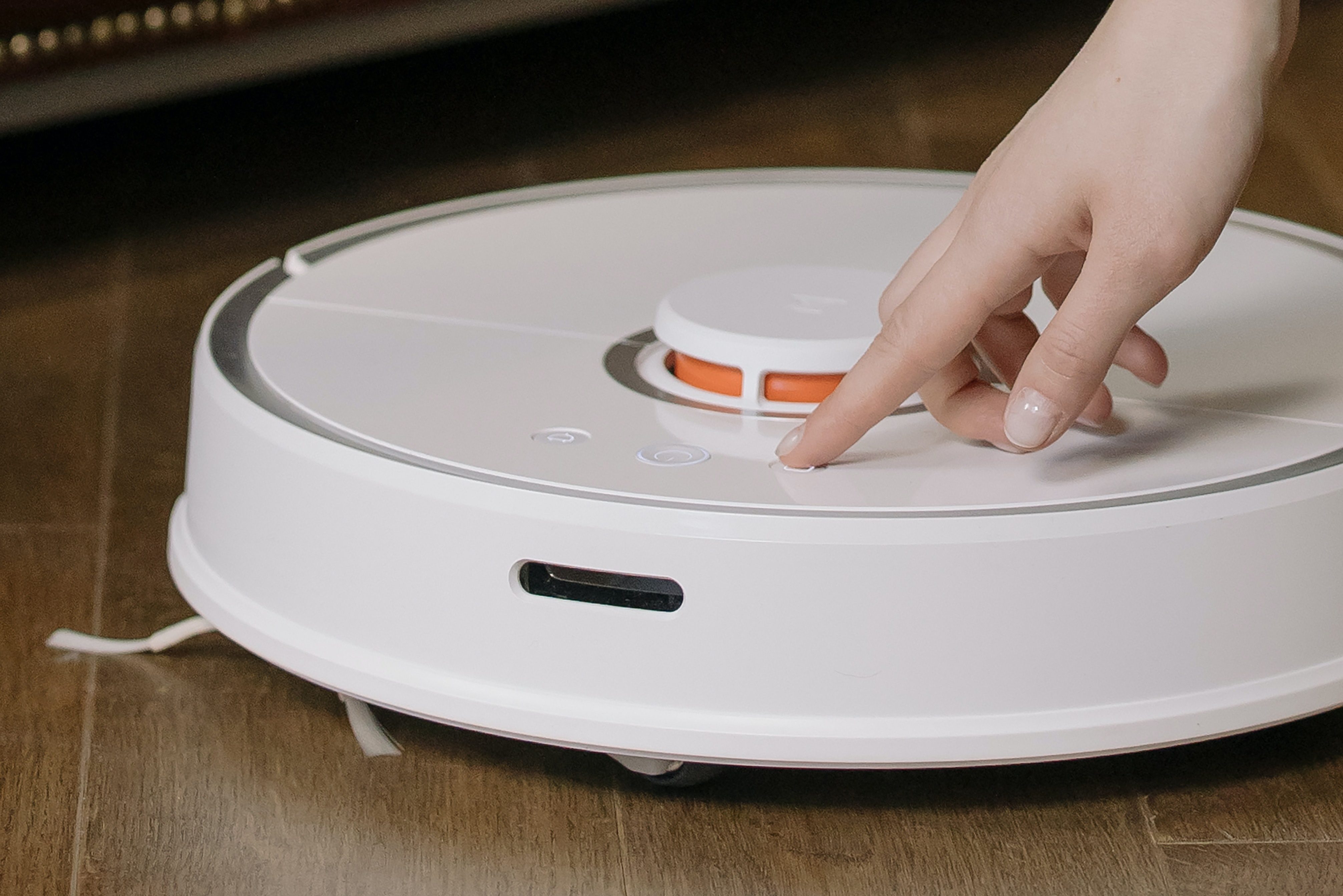The future is now.
Everything you need to know about robot vacuum cleaners
The first robot vacuum cleaner to hit the market was the iRobot Roomba, all the way back in 2002, if you can believe it. However, it’s only in recent years that robot vacuum cleaners have become sophisticated enough to be actually worth buying. Prior to that, they were bulky, clumsy, and, at times, downright stupid.
But technology moves pretty damn fast, and now we’re spoilt for choice with smart, high-capacity, feature-packed robovacs for little more than the cost of a regular vacuum. That said, many people still wonder if they’re advanced enough to replace their trusty Hoover or Dyson, and if so, what they should even look for in a robot vacuum.
So, to help you figure out if a robovac is right for you, we’ve got the answers to all your roomba-related questions.
How do robot vacuum cleaners work?
Robot vacuums are typically circular with two or more spinning brushes attached to the front, designed to reach into tricky corners. All the dust and dirt it finds is then sucked into the canister. Because of their small, slim size (which makes them perfect for vacuuming under low furniture), they can’t hold nearly as much debris as an upright vacuum. As such, you’ll need to empty it after each clean (or more often if you live in a large house), otherwise you can invest in a self-emptying station.
While most robovacs will work on both hard and carpeted floors, if most of your home is carpeted, you may need to fork out a little more cash for a model designed to target carpet - especially if you have pets. Typically, these models have greater suction power and can therefore reach deeper into high-pile carpet and rugs, sucking up dust, dirt and pet fur.

In terms of how robot vacuum cleaners navigate your house, it differs between products and varies between price points. Lower-cost models use infrared sensors to avoid stairs and furniture, and don’t have the ability to map each room. Because of this, you may find your robovac redoing an area it’s already vacuumed, since it vacuums in a back-and-forth pattern and doesn’t really know where it is. Higher-cost models, on the other hand, use cameras or LIDAR (light detection and ranging) to map the layout of your home so it knows exactly where it is at all times. Using this map, you can order your robot to clean (or avoid) a specific room or area of your home.
Many robovac manufacturers (regardless of what sensors they use) also offer special magnetic tape that can be placed on the floor around fragile objects or no-go zones. When your vacuum approaches one of these areas, it’ll automatically back off.
What should I look for in a robot vacuum cleaner?
Robot vacuum features vary greatly depending on price - a cheaper model probably won’t be able to map your home, mop hard floors or be smart home compatible, but the more you spend, the more of these features you’ll get. Here are the main considerations when buying a robovac.
Mopping
Some robovacs also double as robot mops. You’ll usually get an extra attachment with these, as well as a slightly smaller dustbin than non-mopping robovacs, since some of that space will have to act as a water reservoir.
Layout mapping
As we mentioned previously, more expensive robovacs tend to have more advanced sensors, allowing them to create a floorplan of your home. Using this floorplan, they’ll know which rooms have already been cleaned and which haven’t. Regardless of whether or not it can map your home, most models can still navigate their way back to the charging station on their own.

Voice assistant connectivity
If you’ve got a smart speaker or two, you may want to opt for a robovac that’s compatible with Google Assistant or Alexa. Once they’re integrated, you’ll be able to control your cleaning buddy using only your voice.
Self-emptying
At the very, very top of the market (we’re talking $1,000+), some robovacs have the ability to empty themselves into a compatible dustbin station (usually sold separately). With one of these stations on your side, instead of having to empty your vacuum’s dustbin after every use, you’ll only need to empty the large dustbin around once a month.
Battery life
Different brands and models offer different battery life estimates. If you have a small apartment, your robovac should be able to comfortably perform a clean on a single charge. For larger houses, however, it may need a break to recharge in the middle of a clean. Battery life depends on a few factors including floor type and suction level, but most report between 60 and 200 minutes of runtime.
Price
The lowest-cost robot vacuum cleaners cost as little as $200, but they’re incredibly basic and you may end up finding they barely get the job done. On the opposite side of the pricing spectrum, you could pay up to $1,500 for a top-of-the-line, self-emptying, long-life, smart home-enabled robovac. The average price of all the robot vacs we looked at was around $835, but realistically, anywhere from $500 and up should get you a great unit.
What brands offer robot vacuum cleaners?
Probably the first brand that comes to people's mind when they hear ‘robot vacuum’ is iRobot Roomba. They’re so popular that ‘roomba’ has essentially become a synonym for robovac. Other popular brands include Ecovacs (which produce Deebot), Roboroc, Eufy and Xiaomi. Even old-school vacuum manufacturer Hoover has started producing robots.
You can find most of these brands at Amazon, Catch, Kogan and other online retailers, however some brick-and-mortar stores like JB Hi-Fi, The Good Guys, Godfrey’s and even Aldi offer them from time to time.
Interestingly, so far very few of the usual vacuum suspects (e.g. Dyson and Electrolux) have come out with robot vacuums of their own, but as the technology continues to evolve, it’s highly likely they’ll release their own versions in the coming years.

Can a robot vacuum replace my regular vacuum?
The answer to this question really depends on where you live. If you’re in a small apartment or studio, a robovac can absolutely replace your standard vacuum. It may not be able to reach into every nook and cranny, but it should do a solid job of cleaning most of your floor space.
For larger homes or spaces with high-pile carpet, however, a robot vacuum cleaner will rarely do quite as good a job as an upright in terms of power and coverage, and you may find yourself needing to go over areas that haven’t been cleaned quite enough.
That said, they do well at picking up most dust and debris and will at the very least cut down on the number of hours you’ll need to spend manually vacuuming each month.
Related Articles




